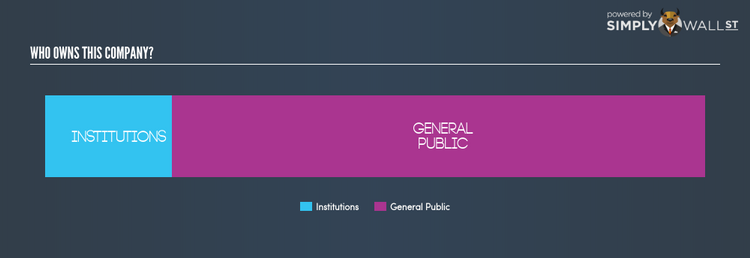Why publity AG’s (ETR:PBY) Investor Composition Impacts Your Returns

I am going to take a deep dive into publity AG’s (XTRA:PBY) most recent ownership structure, not a frequent subject of discussion among individual investors. A company’s ownership structure is often linked to its share performance in both the long- and short-term. Differences in ownership structure of companies can have a profound effect on how management’s incentives are aligned with shareholder returns, which is why we’ll take a moment to analyse PBY’s shareholder registry.
View our latest analysis for publity
Institutional Ownership
In PBY’s case, institutional ownership stands at 19.33%, significant enough to cause considerable price moves in the case of large institutional transactions, especially when there is a low level of public shares available on the market to trade. Although PBY has a high institutional ownership, such stock moves, in the short-term, are more commonly linked to a particular type of active institutional investors – hedge funds. In the case of PBY, investors need not worry about such volatility considering active hedge funds don’t have a significant stake. However, we should dig deeper into PBY’s ownership structure and find out how other key ownership classes can affect its investment profile.
General Public Ownership
A big stake of 80.67% in PBY is held by the general public. This size of ownership gives retail investors collective power in deciding on major policy decisions such as executive compensation, appointment of directors and acquisitions of businesses. This level of ownership gives retail investors the power to sway key policy decisions such as board composition, executive compensation, and potential acquisitions. This is a positive sign for an investor who wants to be involved in key decision-making of the company.
Next Steps:
PBY’s considerably high level of institutional ownership calls for further analysis into its margin of safety. This will allow investors to reduce the impact of non-fundamental factors, such as volatile block trading impact on their portfolio value. However, if you are building an investment case for PBY, ownership structure alone should not dictate your decision to buy or sell the stock. Rather, you should be examining fundamental factors such as publity’s past track record and financial health. I urge you to complete your research by taking a look at the following:
1. Financial Health: Is PBY’s operations financially sustainable? Balance sheets can be hard to analyze, which is why we’ve done it for you. Check out our financial health checks here.
2. Other High-Performing Stocks: Are there other stocks that provide better prospects with proven track records? Explore our free list of these great stocks here.
NB: Figures in this article are calculated using data from the last twelve months, which refer to the 12-month period ending on the last date of the month the financial statement is dated. This may not be consistent with full year annual report figures.
To help readers see pass the short term volatility of the financial market, we aim to bring you a long-term focused research analysis purely driven by fundamental data. Note that our analysis does not factor in the latest price sensitive company announcements.
The author is an independent contributor and at the time of publication had no position in the stocks mentioned.

